Important article by Seymour Hersh, first published by Global Research on June 7, 2018
***
When a reporter has covered 50 years of American foreign policy disasters, the last great untold story may be his own.
That, more or less, is the premise behind a new memoir by Seymour Hersh, the investigative journalist who has been revealing secrets and atrocities—and often secret atrocities—to great acclaim since he exposed the My Lai Massacre in 1969.
Hersh’s book, economically titled Reporter, is focused on the work.
“I don’t want anybody reporting about my private life,” he once said, and Hersh abides by his own request.
In lieu of the personal, we’re treated to the professional: Hersh’s rise from the City News Bureau of Chicago to the United Press International to the Associated Press.
His breakthrough, however, was as a freelancer: Hersh, famously, received a tip about William Calley, a court-martialed Army lieutenant accused of killing 109 unarmed South Vietnamese civilians in a village nicknamed “Pinkville.”
Calley was elusive. Hersh drove into Fort Benning and found him under house arrest. For the resulting dispatches, Hersh was awarded the Pulitzer Prize in International Reporting in 1970.
Hersh continued to report—most notably, perhaps, for The New Yorker—on post-9/11 activities; the Iraq War; Iran; and, contentiously, the killing of Osama bin Laden.
He is now at work on a book about former Vice President Dick Cheney.
Hersh and I recently met at his office in Washington, DC, where I found his desk covered in stacks of files. We talked, and kept talking over lunch, about myriad topics, including protecting sources, self-care, Gina Haspel, and revealing secrets.
THE OFFICE
Elon Green: Let’s talk about why you wrote the memoir in the first place: The book about Dick Cheney you were contracted to write was put on hold because you believed, with good reason, that you couldn’t protect your sources.
Seymour Hersh: I couldn’t do it. I was giving my sources chapters—which I do, not all the time, but stuff that’s relevant, sensitive—and they thought Cheney would figure out who was talking. They were worried.
So I had to go see Sonny Mehta [at Knopf], who paid me a lot of money for that Cheney book. Don’t forget, when I got through with The New Yorker, by the time Obama’s elected, I had a record of a lot of good work, so I signed a contract for a lot of money. I signed a contract in about ’11 and I started working full-time—scads of interviews—and I was told within two months not to put anything in the computer by somebody who was still inside working for Cheney. And I said, “Oh, god.” I said, “Don’t worry about it. I’m not going to connect it to the internet.” He says, “You’re not listening to me.” I said, “No. Fucking. Kidding.” The guy said I couldn’t protect him.
So I went to see Sonny Mehta. It was a lot of money. And they said, “Do this memoir and we’ll see if we can get you off the schneid.” That’s the only reason I ever did one.
Anyway, keep on going. Let’s get a bunch done before we go eat.
Elon Green: You’ve got a photo of Henry Kissinger above your computer. He wasn’t a nemesis, necessarily, but…
Seymour Hersh: You know, Kissinger used to insist when [The Price of Power] was coming out that he didn’t know me. And one of the things I would always do, even with an archenemy, I would always call. And he would take the calls. The day after the book came out, I was supposed to go on Nightline. Was a very big show back in the ’80s. Huge audience. But the night before I was on, [Ted Koppel] brought up my book. Kissinger was on; the papers that night were all full of my book. Kissinger said, “This is outrageous. I’ve never met him. I don’t know him.”
And so, here… [Hersh produces a transcript of a taped phone call with Kissinger] I would call up and ask him about the secret bombing in Cambodia. He said, “We’re retroactively off the record.” I said, “We’re talking off the record?” He said, “Okay, all right.” I said, “On background.” But that means I can write it. He knows the difference between off the record and on background.
And so it turns out he was getting a transcript an hour after I called. He was getting a transcript after saying it was on background. The motherfucker! But that’s just the way it was. Anyway, keep on going.
Elon Green: Bob Woodward once said his worst source was Kissinger because he never told the truth. Who was your worst source?
Seymour Hersh: Oh, I wouldn’t tell you.
Elon Green: You write that you chased the incredibly vague My Lai tip because you were convinced your colleagues in the Pentagon press room wouldn’t. Why wouldn’t they?
Seymour Hersh: I was worried about The New York Times, if you notice, but I knew the guys in the Pentagon press room wouldn’t do it. It was so hard to report there. Don’t forget, anytime you saw a senior officer, they had to log [your name] in. If you had a good story, you had to see five or six different people with bullshit to mask the one guy that told you something important.
Elon Green: So it wasn’t a matter of not wanting to tell the story?
Seymour Hersh: I don’t know. [Press room colleagues] treated me like some sort of rare, exotic animal.
I knew from my own experiences that the war was bad and shit. And by the way, I never thought for one minute that the fact that I learned OJT that the war sucked made me a lefty. I mean, I was. I am a liberal. But I was just somebody who knew the war sucked. I learned by just going to lunch with these guys. They were saying how we have to kill everybody because there are six lieutenant colonels and only one of you is gonna make colonel, and it’s the one that kills the most. So in the last six months of your rotation as a battalion commander, you just fucking….You got 2,000 deaths, man. That’s how bad it was.
I was dead set against the war. It was the right thing to be. Anybody with any fucking brains was. Half the guys in the military were thinking of quitting.
We should go. We can get into a restaurant across the street. I can get my little salad. I don’t eat much. I’m reading this book [gestures to James Comey’s A Higher Loyalty]. This guy is nuts. He’s definitely strange.
LUNCH
Elon Green: How do you document your interviews? Do you use shorthand? Tape record?
Seymour Hersh: I take notes and I go over them. I have a good memory and use a lot of shorthand. All those little adjectives and adverbs, I’ve got a little dash for or something. I just write the keywords. My handwriting is bad, which is good. I understand it and nobody else does. Then I immediately annotate. I sit down, sometimes in the car if I’m on the road. I never tape anything.
Look, if I’m seeing a foreign president—they’d want to tape and I’d want to tape. But I have it transcribed by somebody else. Too boring.
Elon Green: But taping is good for capturing speech patterns and stuff like that.
Image on the right: Seymour Hersh

Seymour Hersh: When I talk about something secret and I show up with a tape recorder, I’m dead.
Elon Green: The New York Times’s reliance on Kissinger wasn’t shocking, but it was grotesque. Max Frankel calling him “Henry.” How do you think their friendliness with Kissinger affected coverage?
Seymour Hersh: Horrible. They missed Watergate! He convinced them there was nothing there.
Elon Green: Kissinger was beloved by reporters because he was accessible. Not much has changed; folks like Paul Ryan and John McCain still get glowing coverage just because they talk to reporters.
Seymour Hersh: Of course. That’s what it’s all about. Trump does, too. The secret to Trump, I think, is he wants to be loved by The New York Times as much as by Fox News. He talks to them a lot, more than they tell you. He waits outside—apparently there’s a corridor from the press room to the bathroom, and he’s hanging around that corridor. He likes to yap.
Elon Green: Do you think the Times’s desire to keep Trump talking makes them pull their punches?
Seymour Hersh: No, I don’t think they’re pulling punches. I think they’re overpunching. I mean, what are they going to do if they don’t indict him? What are they going to do?
Elon Green: Given the amount of really horrible things you’ve covered over the years, you seem very stable emotionally.
Seymour Hersh: I don’t socialize with nobody—not with people in government, even my good sources. I have old friends. Most of them are not in government. I like tennis and sports. I had rotator cuff surgery recently, so I’m about a month away from getting back. I’ll go the gym maybe today or tomorrow.
Elon Green: So it’s really about having a boundary between work and the rest of your life…
Seymour Hersh: Yeah, there’s a big boundary. Do I get depressed? Yes. But everybody should be, now.
Here, you have to have one of these. See what you’re missing. [Hersh puts some tuna tartare on my plate.]
Elon Green: Thank you. You mentioned three instances of Richard Nixon beating his wife.
Seymour Hersh: Oh, god.
Elon Green: You decided not to report on them or even tell an editor. If you got that same information today, what would you do?
Seymour Hersh: I was talking to the Nieman fellows [about the beating incidents], after Nixon was gone. I thought it was off the record. The thing I misjudged is the anger of the women when I didn’t realize [the abuse] was a crime. You will see, in the book you have, the readers’ copy, that I changed it.
You know, my wife likes opera, and I’ve learned to like a lot of it—Verdi, other stuff. And SiriusXM, which has an opera channel that we listen to in the car, announced that it’s no longer going to play any operas conducted by [James] Levine. And that stuff seems crazy to me. But I assume that, for a lot of women, it would be right. I don’t know. I’m still at a strange place on all this stuff. But at least you’ll see the change I made—that was a heartfelt change. I’d thought about it.
But I wouldn’t start an investigation, even now. I got it from inside the hospital. I had a problem from the beginning about reporting it, because the initial source came from—it was the doctor.
Elon Green: So it was mostly about protecting the source? I misunderstood that in the book.
Seymour Hersh: What I did do, I asked John Ehrlichman about it, and I was curious. Before he died, he was talking a lot to me. And he knew of other times Nixon did it. Everybody knew he did it, he said. Oy vey iz mir, as my father would say. I mean, what the fuck?
But I didn’t even want to say that it was a source issue, because that would get back to the hospital. I should’ve kept my mouth shut. I never, never thought they were taping [the Nieman remarks].
On the other hand, as Jack Kennedy used to say, “Nothing is off the record. Nothing.” The Kennedys were tough.
Elon Green: How did you become acquainted with the chief of CIA Counterintelligence, James Angleton?
Seymour Hersh: In ’72, I got invited to one of those old-fashioned dinners by a senior Times guy, a very elegant man. After dinner, the women were excused. My wife said, “Never again.” Right? And we smoked cigars—it was the first time I ever met James Angleton. Come on.
Elon Green: Angleton was fascinating. Are there still people like him in the intelligence agencies?
Seymour Hersh: No. He was smart—really, really smart. I think this Gina [Haspel] is very smart. I watched her testify. She’s very bright. I know some things about her. Yeah, she did torture, but everybody knew about that the torture, including Congress. What I do know, from my friends, is the stuff she files is really good. Since she’s been Acting Director for about three months, she’s done great reporting.
Elon Green: In a memo to Abe Rosenthal in March of ’75, while you were reporting on a Russian submarine, you wrote: “I’m not going around shooting off my mouth about ongoing [reconnaissance] operations, but when one of the programs seems risky and over-priced, and there’s a legitimate news peg, it doesn’t make sense not to tell the American people about it.”
Then you noted, “I was such a purist.” Do you feel like you’re now less or more of a purist?
Seymour Hersh: If there’s something they were doing that was right, I didn’t touch it. But some of the operations that have been described to me as good turn out to be crazy, or stuff that seemed right turned out to be shit.
I saw an old senator yesterday, had to go to some fancy party in Georgetown. Full of spies and Brits. This town doesn’t change. It was at a very fancy club, and there was British spy, a guy from MI6. All sorts of people from the Agency were there. I can’t stand that stuff. I got outta there in an hour.
The whole source business—I know a bunch of people who are “out” that could get anything they wanted if I ask them.
Elon Green: So a source not being “in” is not necessarily an impediment to good information?
Seymour Hersh: You have to be careful, but you have to deal with guys that are known to be good guys on the inside and trusted. It’s very ideological, but you can get information. There’s [an Agency] guy; I was screaming at him once about fucking up the FBI after 9/11. And he said to me, “Sy, you don’t get it. The FBI catches bank robbers and we rob banks.” I thought to myself, Fuck! That’s just exactly right. They’re criminals, what the CIA does. It’s all criminal activity. If you’ve ever watch The Americans, it’s an exaggeration, but….I tell my wife, “They don’t shoot people like that.” Take out the killing and that’s what people do. They do this kind of shit—stupid stuff.
Let’s do a few more and get out of here. I need to go back to my office.
Elon Green: Again and again, your stories expose the deceit of politicians, but they also expose the reporters who defended them. Ted Koppel, who was critical about your reporting on Kissinger, later acknowledged that he’d been offered the job of State Department spokesman and “struggled with it for about three or four weeks” before turning it down.
Seymour Hersh: Here’s what got me about Ted…
[Waitress: Any coffees or cappuccinos, gentlemen?]
No, I think just the check and we’ll share it. We’ll share it. That’s what we should do. I always do that. You don’t want to buy me and I don’t want to buy you.
So anyway, here’s what happened: It’s very strange about Ted. I like him. I was in Jerusalem with my wife. I have a friend in Mossad, and he writes me. He was here undercover and I got to know him.
Israel is strange, man. Anyway, so I’m here for a wedding. He called up, this guy, his name is Dudu. I met him in the early ’80s. He came up to me at a party and said, “We ought to talk.” He said he was a businessman, lived in Bethesda. And the thing about him, his oldest son—I coach soccer for kids. I had two kids early, and God knows, after dinner my wife would say, “You take the 3-year-old, I’ll take the 1-year-old.” I’d say, “No, no, no, I’ve got to go to my office because I’m saving America.” You know what I mean? But I figured out, by the last kid, I’d go to his games and coach soccer for about 10 years. I coached soccer to the point where the boys were about 12. And after a practice I’d say, “Let’s go. We’re going to run three miles now. Get in shape.” And if I walked away and turned around quickly there’d be five of these: [gestures] Fuck you signs. That’s when I gave up.
But anyway, what I learned later is that you can’t save the world. So this guy from Mossad, we became friends. I liked him. There wasn’t much I could do with him. One day I took him, there’s a wonderful little German restaurant here called the Mozart Café. And this was ’86, ’87…
Elon Green: You had started to say something about Ted Koppel, if you want to finish that thought…
Seymour Hersh: I was in Jerusalem and we were at that wonderful hotel in East Jerusalem. Hard to get into. And he was there, and so we had a great time, this was about 10 years ago. And then before that, before I knew what he said in 2005, I didn’t know about that till I was working on the book. I knew a little bit about it, I knew he’d been close to Kissinger because Kissinger was on his show all the time.
I was at an off-the-record thing after 9/11, on the First Amendment before the New York Bar. It was an off-the-record deal. And [Koppel] was on the platform. And off the record he was awesome about how fucked up things were—he got it. On the air he wasn’t. I know he’s bright. He’s a refugee, you know what I mean? He’s a landsman, in a way. But there’s something muting about the business. I can’t stand cable television. It’s just so dumb.
Elon Green: In your memoir, you say, “I can write now what I could not [in 1990], which was that the CIA had impeccable intelligence, conversation on nuclear issues in real-time, from deep inside the Pakistan nuclear establishment.” Why couldn’t you report that?
Seymour Hersh: Because the person who told me was still in. [Now] he’s long gone.
Elon Green: Did you run that by him while you were working on the book to make sure it was okay to disclose?
Seymour Hersh: He’s gone completely crazy. It’s been 30 years.
BACK IN THE OFFICE
Elon Green: In a footnote, you mentioned that George Soros asked to meet with you after one of your 9/11 stories in The New Yorker, and you initially declined. Why?
Seymour Hersh: Because it was a story about intercepts of the Saudis. I knew he would guess correctly that there was a lot of talk about oil, so I thought his purpose was not necessarily marginal. I had never met George and I didn’t wanna go. But he then went to Morton Abramowitz, who’s a friend of mine, who had been ambassador to Thailand among other things. And Mort called up and said he’s going to give me $50,000 [for Abramowitz]. Ten people are going to come to that dinner and [Soros] is gonna to pay $5,000 each to me if you come. So how could I say no? So I said yes and fuck if they didn’t have it; they’re all brokers.
Elon Green: Stock brokers?
Seymour Hersh: Oil brokers! George is a master, man. I avoid those guys like the plague.
Elon Green: You write that you knew about atrocities during the Iraq War, including Americans destroying with acid the bodies of detainees who had died during torture. But you didn’t report it because Cheney would have destroyed your sources. How did you protect your sources during the Bush years?
Seymour Hersh: It was hard—by not writing stuff I knew.
Elon Green: It wasn’t so much about how you wrote about them, it’s that you didn’t write about them?
Seymour Hersh: Here, don’t speak. [Hersh produces a memo] You’re just going to watch right there. I just happened to pull this out today. The classification on this is above the world. It’s something about a brief on Gray Fox. I’ve never heard of Gray Fox and you’ve never heard of Gray Fox, ok? The date of this paper is [redacted].
That’s a report to the Secretary of Defense about what’s going on with Afghan detainee issues. That’s some low-intensity work there, special ops. Specific issues about prisoners. What the fuck? I have never been able to find out what happened to [the prisoners]. I have some bad thoughts, because we thought everybody that was a tough little kid was Al Qaeda. I’ve asked everybody. It’s scary. The capacity to do stupid fucking things in America is just fucking scary.
I don’t publish that stuff. A lot of guys would just go with it. I want to know why. First of all, I don’t know anything about what happened. The suggestion, obviously, is somehow some people were hurt or put away, but I don’t know that, either. And I was worried about getting the source of all that exposed. I don’t know if that was a memo written to five people or four or six or seven. And I can’t be sure if there’s some designator in it. You know, they’re very sophisticated now in tracing papers.
Elon Green: You describe Mary McGrory as “a fearless and moral voice.” Who do you see as such a person today?
Seymour Hersh: You’re talking to somebody who grew up with a New York Times that had Tony Lewis, Tom Wicker, and Russell Baker writing columns. Now, there’s some good stuff. But there’s too many screeds about Trump from the columnists. Tom Friedman still runs around the world, but I don’t see enough reporting being done by the columnists. Yes, we talk about immigration and shrieking about the president, but there’s nobody writing about what to do and how to solve it.
Elon Green: If we could return to the Cheney book for a moment: You didn’t want to publish the book because of threats to your sources, and the risk to their careers?
Seymour Hersh: Prosecution! Obama’s prosecuting. Remember the guy that went to jail? Risen’s source? I don’t know the inside story, but what the hell? He’s prosecuting people left, right, and center.
Elon Green: I think there’s a disproportionate amount of resources focused on the White House as opposed to Congress. Do you agree with that?
Seymour Hersh: It’s catnip, man; the White House is catnip. And Obama was catnip. I gave Obama a lot of slack. I know he lied about bin Laden; I just know it, I don’t care if it’s never proven, I don’t care if anybody cares. I know he made a deal with the Pakistanis. I know that he made a deal not to tell and he told about it. The bottom line is he did order a hit; he did kill him; he worked closely with the Pakistanis. How could you not?
Elon Green: Were you reluctant to publish the bin Laden story?
Seymour Hersh: I was eager to run it.
Just this week, there was a story in The New York Times about a book by a former head of the Pakistani intelligence service. He said the same thing. In the book, he said money was paid, which is also what I understand.
Elon Green: Did you suspect there would be backlash to your story?
Seymour Hersh: Did I suspect there’d be backlash? My experience has been, when you have a major story like that—if you go back and look, the White House controlled the story for two weeks. Reporters were begging for something different and exclusive. At one point, one of the big stories was about a dog that was brought by the SEALs on the trip. The dog was apparently barking in Urdu [laughs].
I’m just saying, when you have a story like that, in which everyone gets involved in briefings—McDonough, Brennan—this is obviously about reelection.
Elon Green: Did the backlash and disbelief from non-experts tell us anything about the importance of the official bin Laden narrative as put forth by the government and other reporting?
Seymour Hersh: Well, it’s not a new phenomenon that when there’s a crisis, the White House controls the story. What I find pernicious now about cable television is that, at any given moment on any given day, the White House can give the networks the leak and they get right to it. No one verifies it. They just put out “breaking story,” “breaking news.” But I remember there was a lot of rage at my story, a lot of anger, and a lot of very good reporters said “this can’t be true.” And I remember thinking to myself, Don’t they have mothers? Hasn’t anyone told them that, a year or two later, there might be a different story coming out?
But I’m used to this.
Elon Green: “I will return to the Cheney book when those who helped me learn what I did after 9/11 will not be in peril,” you write. When would that be?
Seymour Hersh: Now. One of the problems is, one of those who helped me is now working for this—working still inside.
There’s still a deep core—it’s not paranoia, it’s not something like a deep state. But I have to think of a way to incorporate what I have.
[Phone rings, Hersh answers and chats for several minutes.]
Elon Green: Even though he’s not in office, Dick Cheney remains a threat to your sources?
Seymour Hersh: Yeah. Directly.
Elon Green: And yet you’re still doing the book.
Seymour Hersh: Oh, my God. It’s my meal ticket, man. I mean, we live hand to mouth. I think it’s gonna be the next book.
Elon Green: Do younger CIA agents treat you differently than the older generation?
Seymour Hersh: No, I hardly know them. There’s no contact. There used to be a time, believe it or not, when I would go every year to meet the rising GS-12s of the National Security Agency. We would talk about the press. These are linguists and cryptographers. I used to always joke that I’m gonna leave self-addressed stamped envelopes here and stuff like that. But there’s no contact anymore. They’re too uptight. And maybe they’re right to be. Maybe the press has changed.
I always thought my business as a reporter was to take a dispute and resolve it. I mentioned in the introduction about treating things as the tip. The first story the Times wrote on [Hillary Clinton’s] email—that was off-the-top, flimsy, one or two days after they had it. They had no idea what a good story it was.
In the book I’m writing, I can segue into this stuff; I’m writing a lot about what was going on in the FBI. There was a lot going on that was counter-Trump, I will tell you that. I’m telling you, it’s the missed story of all time.
OK, couple more. We gotta go.
Elon Green: Why did a presidential commission investigating the CIA believe you were working for foreign intelligence?
Seymour Hersh: How’d you find that story?
Elon Green: I, um, just happened to be reading the Miami Herald.
Seymour Hersh: Yeah! ’Cause Angleton was crazy. I had to be working for foreign intelligence. He’s nuts. That’s why I went to Colby. But nobody’s asked me about that. Of course they were looking at me. There was a fascination with me in the CIA. There’s a study called “William Colby as Director of Central Intelligence 1973-1976” by Harold Ford, a historian. It was written in ’93, declassified in 2011. And chapter seven is “Hersh’s Charges Against the CIA.” There’s 12 pages on me.
Two years before I published [the story on CIA operations against the anti-war movement], in December of ’74, they were tracking me that long. All sorts of intercepts of me. They’re taping me every time I call Colby at home! Colby knew all about this criminal activity, and they never told Justice. So I went to see Larry Silberman, who was the number two man in Justice. So I go to Silberman, call him up and say, “I better tell you something. The CIA’s got this shit going on.” So then, the day I’m writing the story, Silberman calls Colby, and he’s taped. Taped even Silberman! Ford wrote that “On 21 December, Silberman told Colby that Hersh had phoned to tell him in advance of Colby’s meeting with Silberman on the 19th.”
The whole thing is amazing.
Elon Green: So Angleton really thought that you were—
Seymour Hersh: Oh, what else could he think? He was such a nut. They were so crazy. He used to talk to me, and tried to bribe me.
Elon Green: What?
Seymour Hersh: [Angleton] tried to bribe me not to do the domestic spying story. He gave me a story that I feared was true about something going on in Russia. And I thought, what the fuck is this? So I called Colby, not knowing they taped everything. I had his home number. I said, “I got a problem, what the fuck is this?”
Colby told me later that was the final straw, and that’s why he said he had to fire [Angleton]—because it was an ongoing operation.
Which I didn’t write about. I have no idea if it’s true or not because it’s a whole hall of mirrors.
 Video: Pfizer Criminality Exposed: Thailand’s Royal Princess In Coma after Covid Pfizer Vaccine Booster
Video: Pfizer Criminality Exposed: Thailand’s Royal Princess In Coma after Covid Pfizer Vaccine Booster Setting the Record Straight; Stuff You Should Know About Ukraine
Setting the Record Straight; Stuff You Should Know About Ukraine How the Super-Rich Destroy Our Minds
How the Super-Rich Destroy Our Minds Video: Vitamin D Is More Effective Than the COVID-19 Jab
Video: Vitamin D Is More Effective Than the COVID-19 Jab Tavistock Et Al, Black Cars, Torn Jeans and LGBTQ: Social Engineering, Mind Manipulation
Tavistock Et Al, Black Cars, Torn Jeans and LGBTQ: Social Engineering, Mind Manipulation U.S. Act of War against the European Union: President Biden Ordered the Terror Attack against Nord Stream. High Treason against the People of Europe
U.S. Act of War against the European Union: President Biden Ordered the Terror Attack against Nord Stream. High Treason against the People of Europe Secret Document: Germany’s Bundeswehr is Preparing to Wage War on Russia
Secret Document: Germany’s Bundeswehr is Preparing to Wage War on Russia “Deviation Maneuvers”, Towards A “One World Order”? Fierce War in Ukraine, Militarization of Covid Vaccine
“Deviation Maneuvers”, Towards A “One World Order”? Fierce War in Ukraine, Militarization of Covid Vaccine Video: Covid Vaccine, 55 Performers Collapsing or Dying on Stage or Live Camera in Late 2022 through 2023
Video: Covid Vaccine, 55 Performers Collapsing or Dying on Stage or Live Camera in Late 2022 through 2023 Video: Pfizer’s “Secret” Report on the Covid Vaccine. Beyond Manslaughter. The Evidence is Overwhelming. The Vaccine Should Be Immediately Withdrawn Worldwide
Video: Pfizer’s “Secret” Report on the Covid Vaccine. Beyond Manslaughter. The Evidence is Overwhelming. The Vaccine Should Be Immediately Withdrawn Worldwide How America Took Out the Nord Stream Pipeline
How America Took Out the Nord Stream Pipeline Pfizer COVID/Vaxx Campaign is a Fraud: Criminal Charges against President of Switzerland
Pfizer COVID/Vaxx Campaign is a Fraud: Criminal Charges against President of Switzerland The Truckers Freedom Convoy – And The Grapes of Wrath
The Truckers Freedom Convoy – And The Grapes of Wrath The Chinese Spy Balloon Hoax
The Chinese Spy Balloon Hoax Prediction of a Disenchanted World “Inside the Iron Cage”
Prediction of a Disenchanted World “Inside the Iron Cage” Victoria Nuland: “FxxK the EU.” Nord Stream Is “A Hunk of Metal at the Bottom of the Sea”
Victoria Nuland: “FxxK the EU.” Nord Stream Is “A Hunk of Metal at the Bottom of the Sea” China Balloon Opportunism and Hypocrisy
China Balloon Opportunism and Hypocrisy Graphene COVID Kill Shots: Let the Evidence Speak for Itself
Graphene COVID Kill Shots: Let the Evidence Speak for Itself How Tyranny Overran the United States While You Were Watching YouTube
How Tyranny Overran the United States While You Were Watching YouTube US Declares War on Turkish Tourism Economy. Ankara Retorts: “Take Your Dirty Hands off Turkey”
US Declares War on Turkish Tourism Economy. Ankara Retorts: “Take Your Dirty Hands off Turkey”



 The Worldwide Corona Crisis, Global Coup d’Etat Against Humanity
The Worldwide Corona Crisis, Global Coup d’Etat Against Humanity

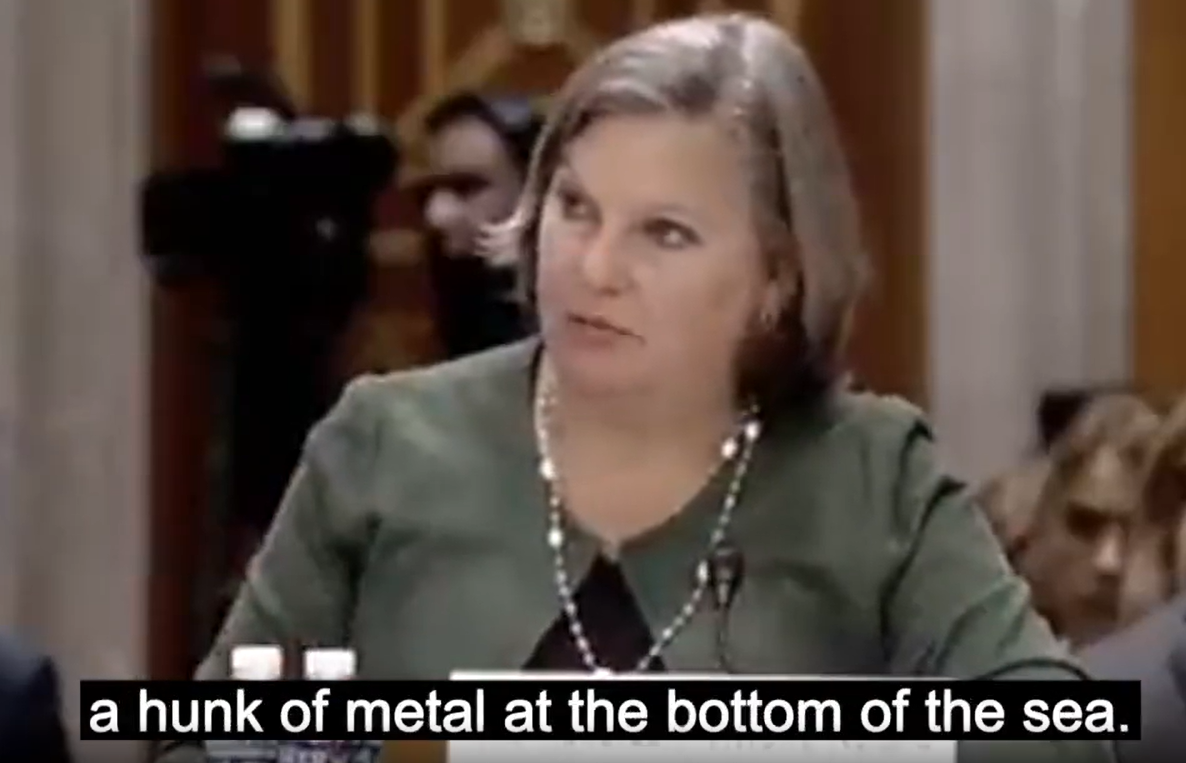


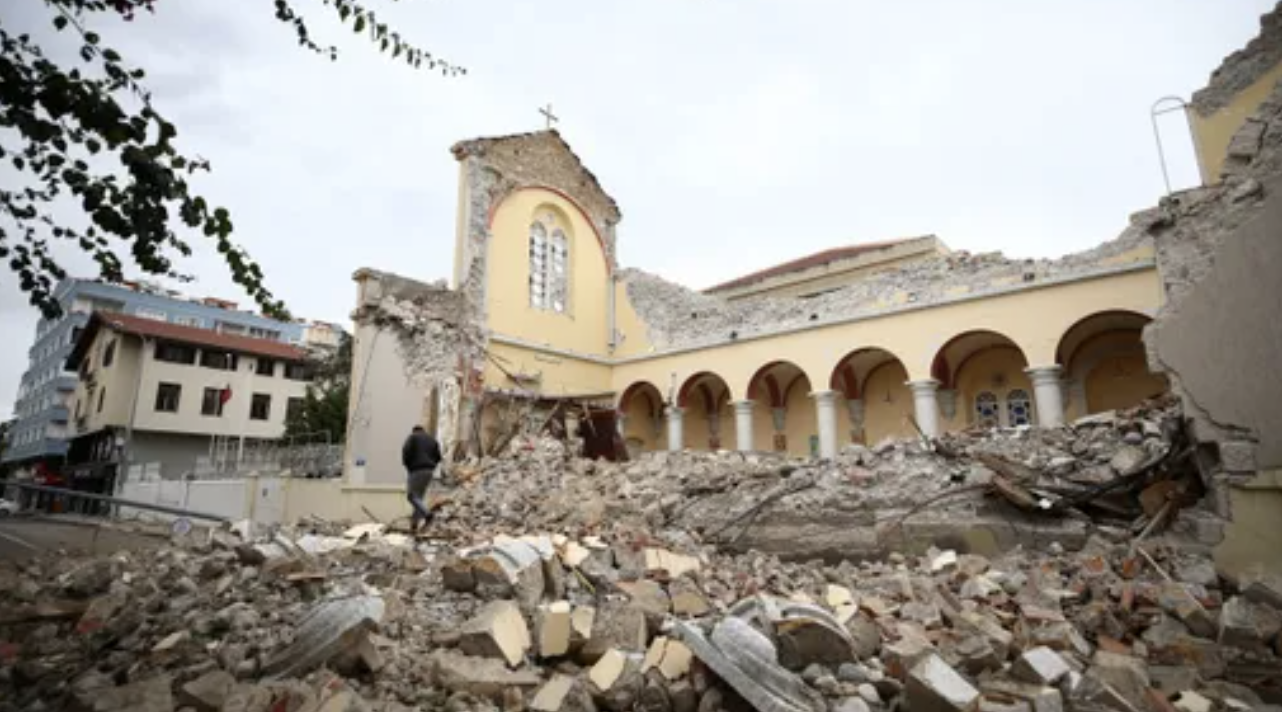
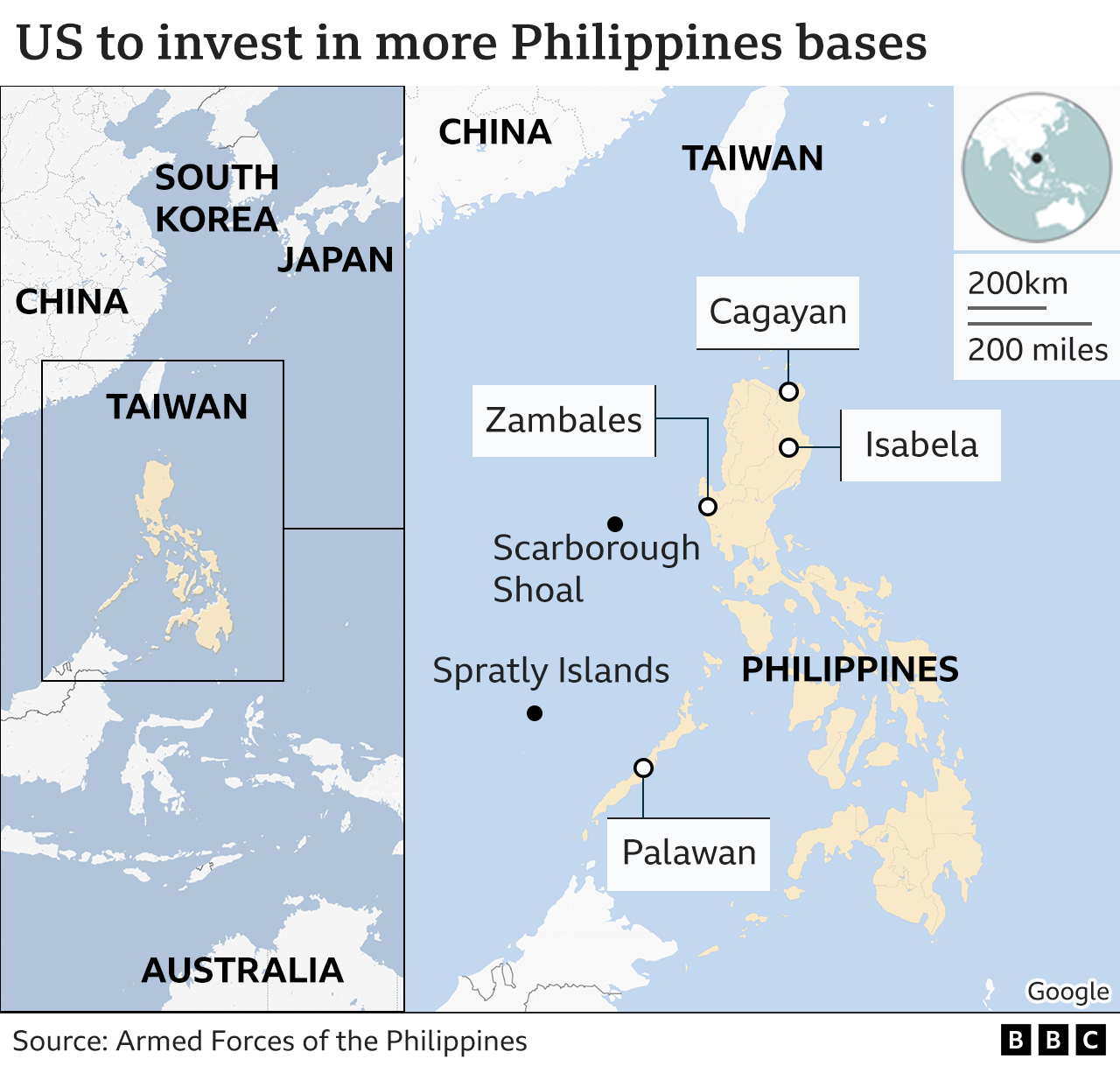




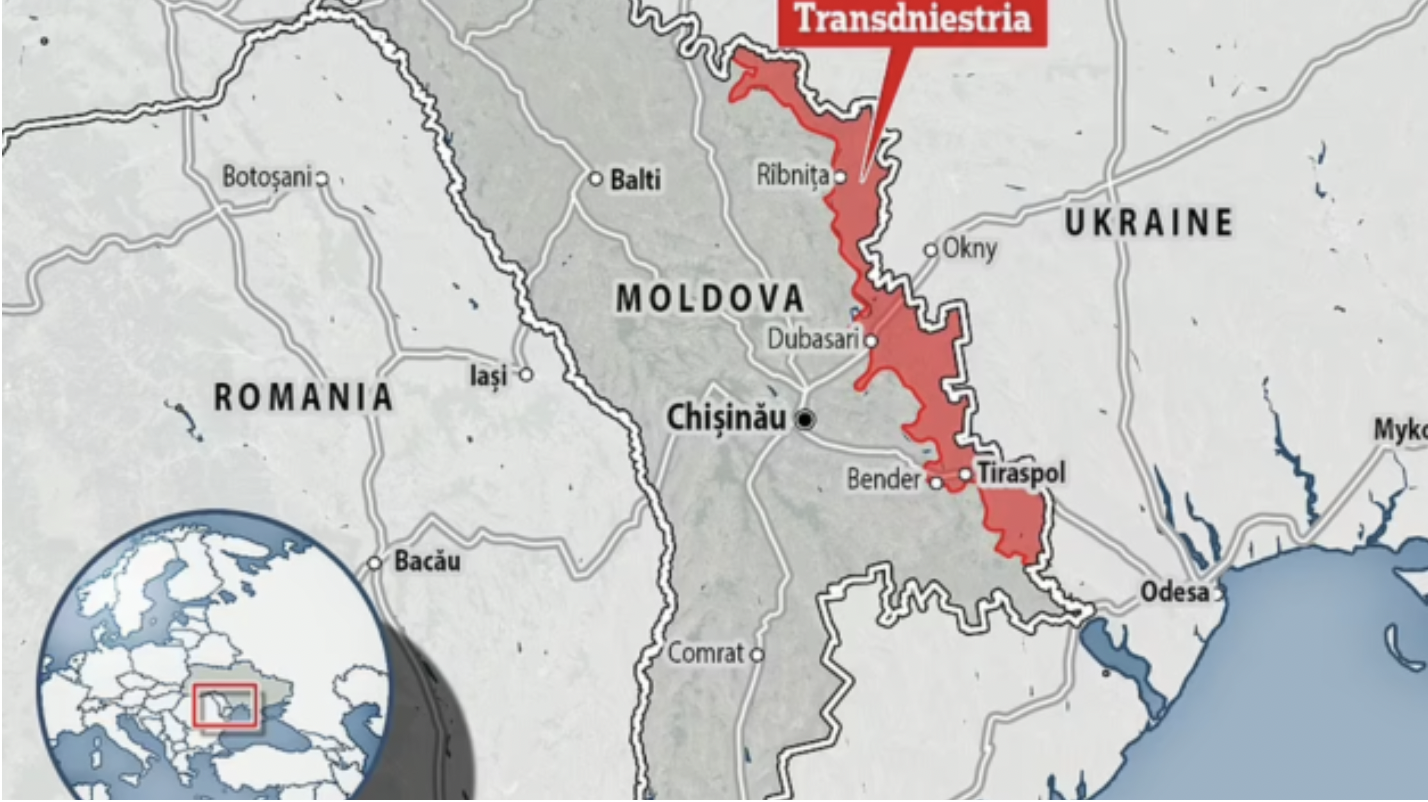
 “By an act of April 16, 1862, which abolished slavery in the District of Columbia, Congress made an appropriation of $100,000 for voluntary Negro emigrants at an expense of $100 each; and later, July 16, an additional appropriation of $500,000 was made at Lincoln’s request. The President was authorized ‘to make provision for transportation, colonization, and settlement, in some tropical country beyond the limits of the United States, of such persons of the African race, made free by the provisions of this act, as may be willing to emigrate, having first obtained the consent of the government of said country to their protection and settlement within the same, with all the rights and privileges of freemen.’”
“By an act of April 16, 1862, which abolished slavery in the District of Columbia, Congress made an appropriation of $100,000 for voluntary Negro emigrants at an expense of $100 each; and later, July 16, an additional appropriation of $500,000 was made at Lincoln’s request. The President was authorized ‘to make provision for transportation, colonization, and settlement, in some tropical country beyond the limits of the United States, of such persons of the African race, made free by the provisions of this act, as may be willing to emigrate, having first obtained the consent of the government of said country to their protection and settlement within the same, with all the rights and privileges of freemen.’”
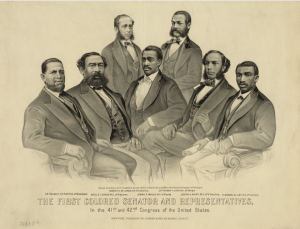 states of Kansas and Oklahoma. Nonetheless, the most notable outmigration from the South came with the rapid growth of industrial capitalist production largely centered in Northern cities during the first half of the 20th century.
states of Kansas and Oklahoma. Nonetheless, the most notable outmigration from the South came with the rapid growth of industrial capitalist production largely centered in Northern cities during the first half of the 20th century.





























